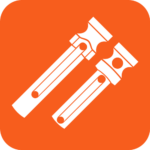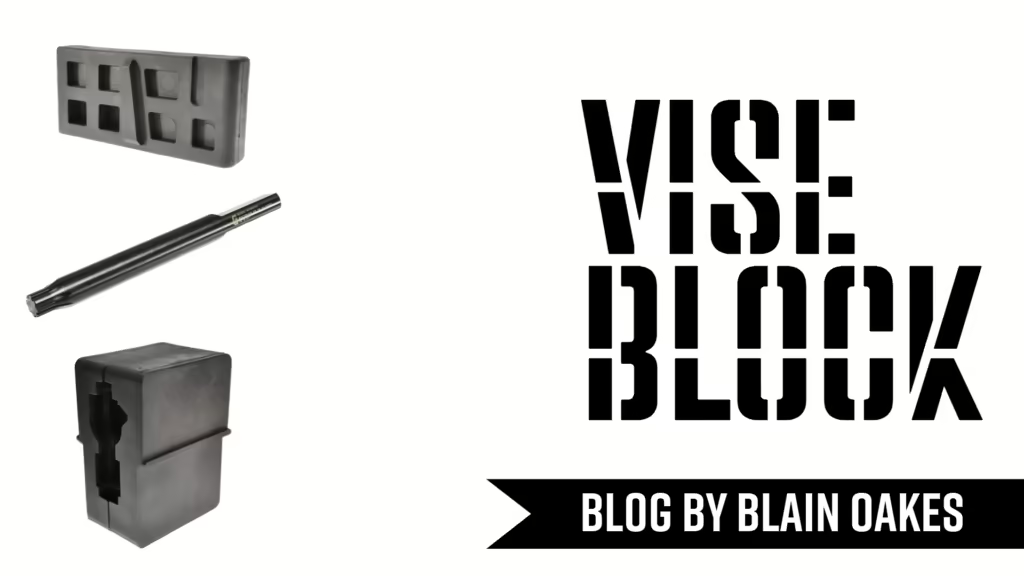
Building an AR-15 at home is a rewarding experience, but using the right tools is just as important as choosing quality parts. Properly securing the upper receiver in a vise is a crucial step that ensures a successful and damage-free build. Whether you’re installing a barrel, mounting a muzzle device, or making adjustments, selecting the best vise setup will make the process easier and more effective. In this guide, we’ll explore the three most common methods for Securing Your AR-15 Upper Receiver in a Vise—clamshell vise blocks, upper receiver vise blocks, and reaction rods. Each method has its own advantages and drawbacks, so understanding their best use cases will help you choose the right tool for your needs.
Why Proper Upper Receiver Securing Matters
When working on an AR-15, improper securing can lead to:
- Receiver damage due to uneven pressure or torque.
- Misalignment of components like barrels and optics.
- Inconsistent torque application, affecting rifle performance and reliability.
Using the right vise method prevents these issues and ensures a smooth assembly or modification process.
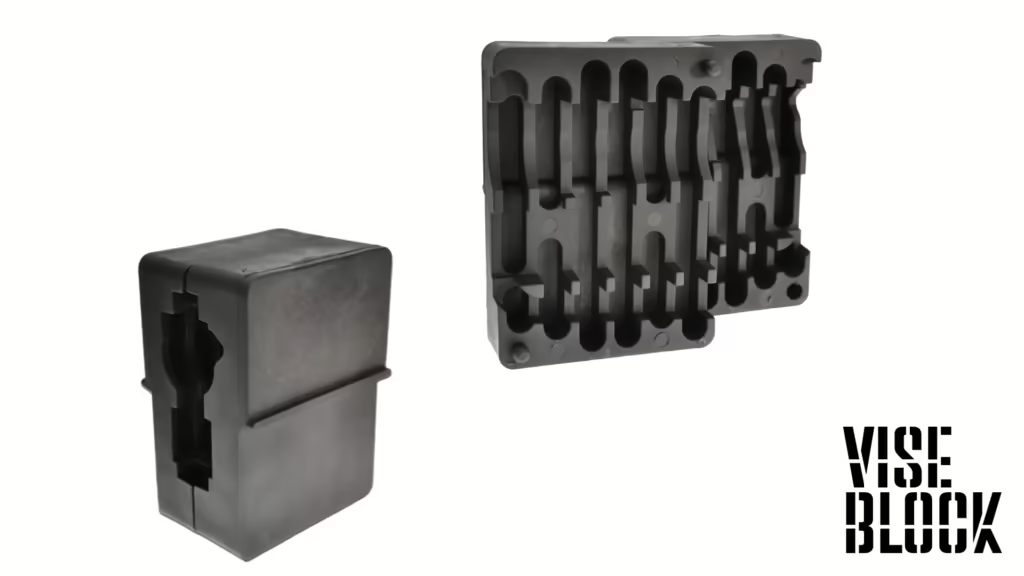
1. Clamshell Vise Blocks
How They Work
Clamshell vise blocks fully enclose the upper receiver, distributing pressure evenly when clamped into a bench vise. They are typically made from polymer or aluminum and designed to fit mil-spec upper receivers securely.
Pros
✅ Provides full coverage, minimizing stress on individual parts.
✅ Ideal for quick tasks such as accessory installations.
✅ Affordable and widely available.
Cons
❌ Can deform or crack polymer receivers under high pressure.
❌ May slip if not perfectly molded to the receiver.
❌ Does not secure the barrel extension, making it unsuitable for high-torque applications.
Best Used For
- Installing handguards, optics, and small accessories.
- Routine maintenance that doesn’t require high torque.
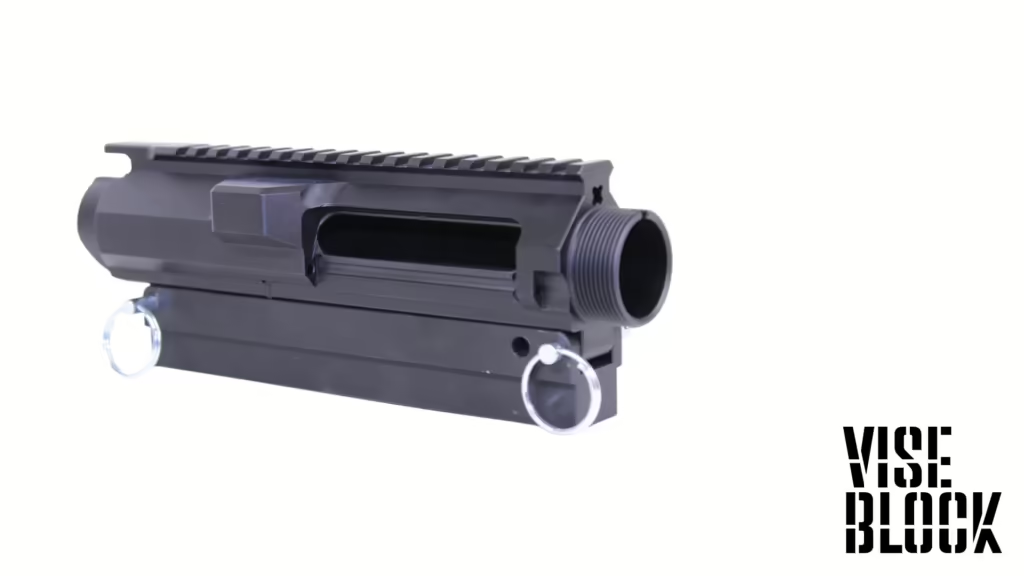
2. Upper Receiver Vise Blocks (Takedown/Pivot Pin Style)
How They Work
These vise blocks secure the upper receiver by mounting through the takedown and pivot pin holes. The block is then clamped into a vise, holding the upper receiver firmly in place.
Pros
✅ Easy to use and quick to set up.
✅ Compatible with any upper that fits on mil-spec lowers.
✅ Suitable for light to moderate tasks like installing forward assists, optics, and handguards.
Cons
❌ The receiver is not designed to handle high torque at the takedown/pivot pin points, making these blocks unsuitable for installing/removing barrel nuts or muzzle devices.
❌ Can introduce flex in the receiver if overtightened, leading to potential warping.
Best Used For
- Light to medium work, such as pinning gas blocks and mounting optics.
- Quick adjustments requiring minimal torque.
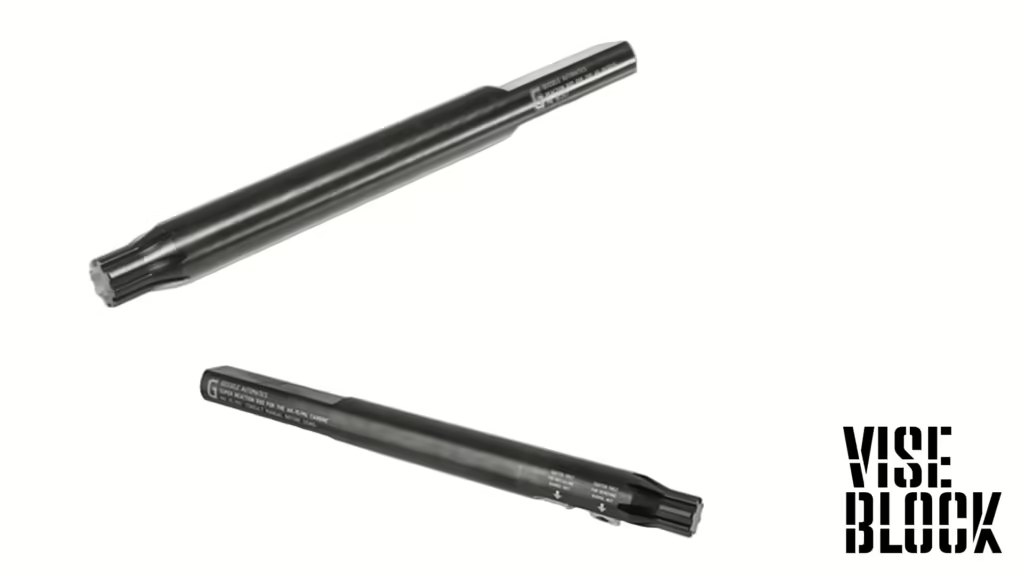
3. Reaction Rods
How They Work
A reaction rod (or barrel rod) slides into the upper receiver and engages the barrel extension’s locking lugs. This secures the barrel itself inside the vise, preventing torque from being transferred to the upper receiver, index pin, or barrel nut slot.
Pros
✅ Designed for high-torque applications like tightening barrel nuts and muzzle devices.
✅ Secures the barrel without stressing the receiver or index pin.
✅ Provides a stable hold, eliminating movement during work.
✅ Prevents twisting or warping of the upper receiver.
Cons
❌ More expensive than other options.
❌ Requires a high-quality vise for best effectiveness.
❌ Some budget models may not fit all barrel extensions perfectly.
Best Used For
- Installing or removing barrel nuts.
- Attaching muzzle devices, suppressor mounts, or any component requiring high torque.
- Minimizing stress on the receiver during builds.
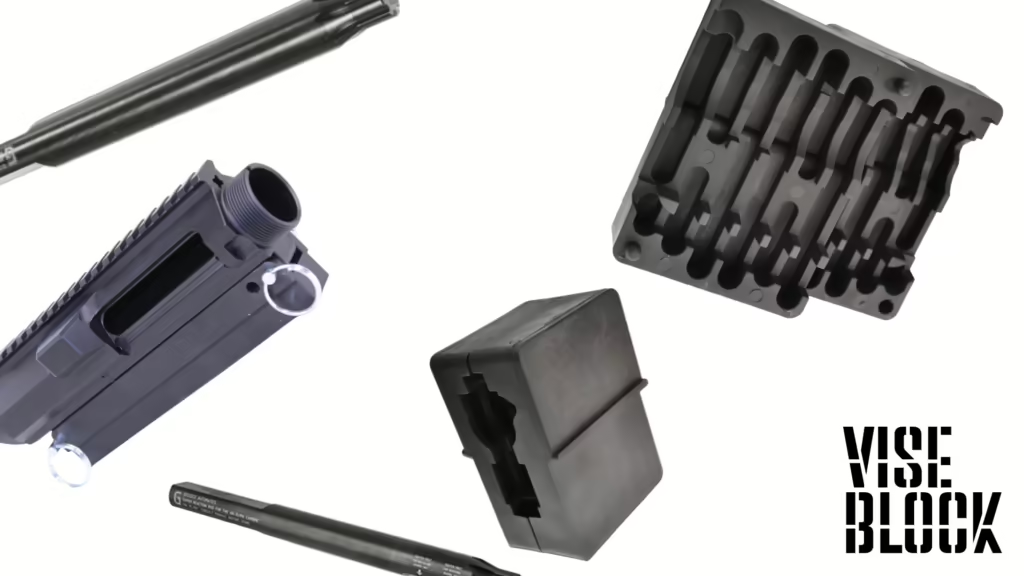
Final Thoughts: Choosing the Best Method Securing Your AR-15 Upper Receiver in a Vise
Each tool serves a specific purpose depending on the task at hand:
- Clamshell vise blocks are a simple, cost-effective solution for general maintenance and accessory installation.
- Upper receiver vise blocks offer a secure hold through the takedown and pivot pin holes, making them ideal for moderate tasks.
- Reaction rods provide maximum stability for high-torque applications like barrel and muzzle device installation.
By selecting the right tool for your needs, you can ensure stability, prevent damage, and make your AR-15 assembly or maintenance process more efficient and precise.






